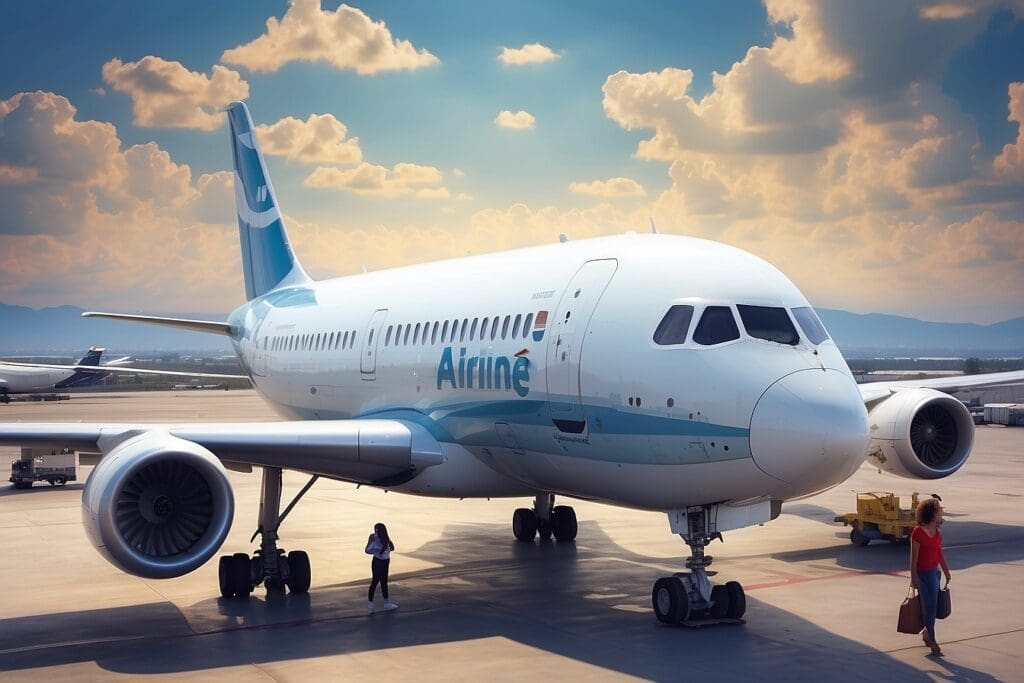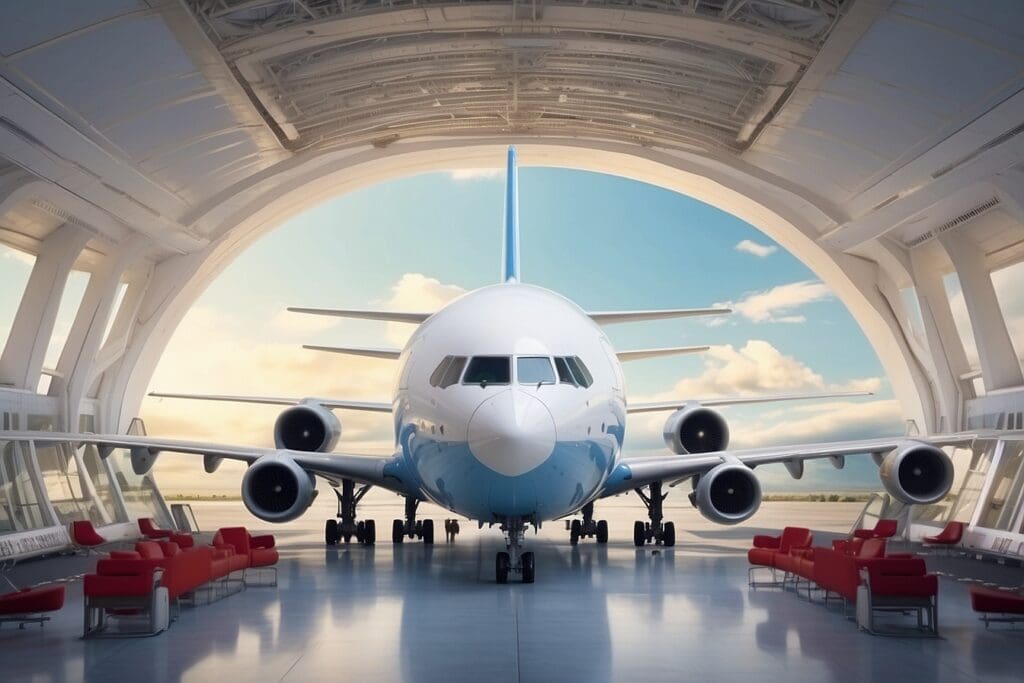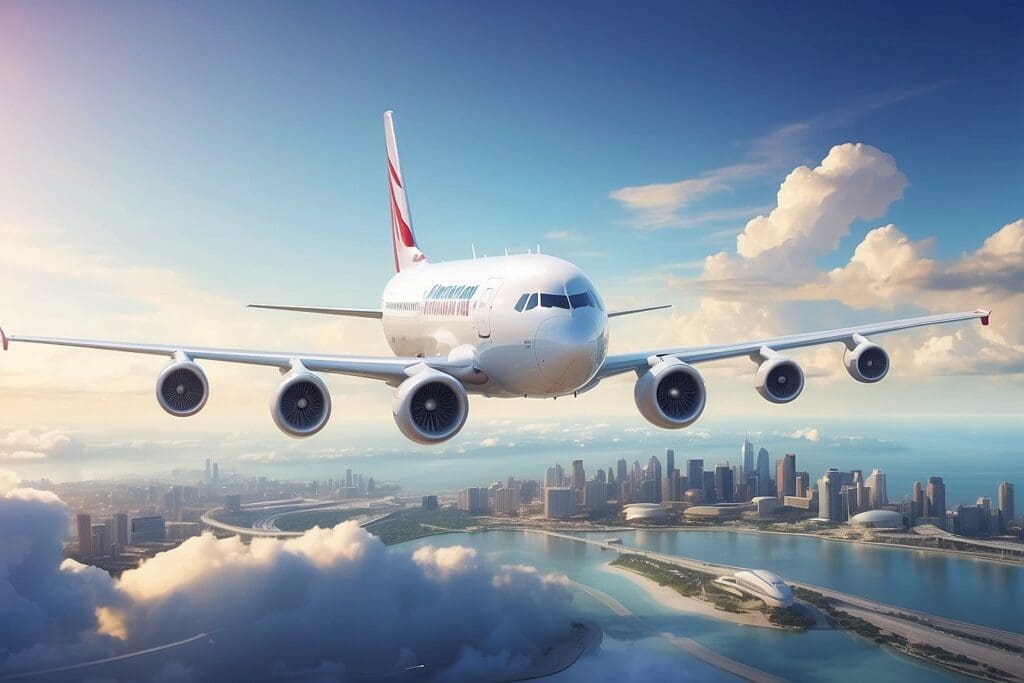Every year, more than 732 million passengers take to the skies in the United States alone to experience the miracles of flight.1 Trafficking passengers at speeds in excess of 500 miles per hour, modern air planes have made expedited travelling possible on a monumental scale. Through the years, improvements in airline safety and technology have streamlined this mode of transport, granting greater accessibility to millions around the world. While the growth of the aviation industry is certainly improving connectivity and contributing to the flattening of our world, the gargantuan scale of carbon dioxide (CO2) into the atmosphere.3 A sustainable environmental solution to flight is needed that optimizes sustainable fuels with practical speed of travel, and several considerations are needed in forwarding green aviation: management, design, alternative fuel, and propulsion.
Airline Industry Management
One of the best ways to reduce fossil fuel usage in the first place. Improving information technology to prevent delays in landing is an example of such a preventative measure because this decreases fuel usage. If an aircraft is forced to standby in the air due to the lack of air traffic management, cumulatively there is a great deal of fuel expenditure. A great way to improve aircraft management are technologies designated as Required Navigation Performance (RNP), which include a wide range of navigational equipment and data systems that help track aircraft position and optimize air traffic management.4 It is estimated that basic RNP implementation can save $5 – $10 billion dollars in fuel costs annually.5
Another management approach known as Continuous Decent Approach (CDA) may also hold great prospects in minimizing unnecessary fuel loss during landing. Typically, a pilot’s descent profile involves losing altitude in gradual phases that involving descending, maintaining altitude, and descending again. This stepwise approach tends to be wasteful in fuel since maintaining an altitude requires a moderate amount of engine power. CDA is a strategy currently being investigated which aims to make use of information technology to allow pilots to gain clearance for long and continuous descents that do not require altitude plateaus. Studies conducted by Airbus have indicated a 10% increase in fuel efficiency during landings if CDA is implemented.6
Aircraft Design

Weight is the number one economic concern of flying, so at least this factor is in line with environmental considerations! Many research ventures are seeking to implement a lower weight design that increases wing lift efficiency. Our previous example of a 10 hour international flight using 36,000 gallons of jet fuel needs to carry 1,133 tons of fuel weight alone for its journey.7 Fuel literally weighs tons—this is also the reason why hypermilers choose to only fill up their car gas tanks half way when they go to the gas station! Therefore, minimizing weight in order to maximize fuel efficiency is a prime concern in aviation. Most modern aircraft today are made up of aluminum alloys 8 that are fairly cheap, lightweight and strong. With the advent of even more modern composite materials such as graphite-epoxy, which weigh even less while maintaining the same strength of aluminum, there is a great push to build as much of the aircraft out of composites as possible. A notable example of an aircraft making headway with composite building is the Boeing 787, which makes use of a 50% composite fuselage structure.9
Apart from the material, there is the design itself that maximizes lift efficiency of the wing while minimizing drag. A very simple way of maximizing lift would be to increase the wing surface area, and Boeing has managed to follow suite with the X-48B prototype that incorporates the wing into the entire fuselage granting better fuel efficiency and load capacity.10 The catch, however, is a much lower airspeed due to a larger wing that is prone to being effected by air resistance. The X-48B amazingly only has a top speed of 139 miles per hour, a speed attainable by any roadway-using sports car. Airbus has also had a stab at revolutionizing green transport with their current NACRE (New Aircraft Concepts Research) Pro green aircraft featuring a large span upswept wing and a U-Shaped wing that also aims for greater efficiency but with much slower speeds as well.11 A prototype by MIT remarkably makes use of a different approach to large wing spans and larger tails by using a design philosophy that is completely opposite. Known as the double bubble,12 the aircraft uses small wings and a smaller tail than a commercial aircraft along with a fuselage that is composed of two partial cylinders. Instead of a larger wing and tail, the double bubble makes use of a wide fuselage to act as an additional wing, thereby increasing overall lift.13 The concept not only dramatically increases cabin space, but makes the passenger cabin functionally integral to the aircraft.
On top of good ground-up design from the drawing pad, smart technology incorporated in an aircraft could potentially work wonders in making air travel more environmentally sustainable. One of the key requirements for flight is smooth, laminar airflow over the wing that makes Bernoulli’s principle 14 possible. The smoother the flow, the greater the lift that is generated from the pressure differential created by differences in flow speed between the top and bottom of the wing. NASA in conjunction with Boeing last year released a remarkable technology known as Active Flow Control 15 which makes use of computer controlled actuators to direct the airflow on the wing to be as efficient as possible. By blowing air over the wing in a controlled fashion, Active Flow Control helps minimize turbulent air flows over the wing, thereby maximizing lift efficiency on any wing design in which it is incorporated.
Type of Fuel

biofuels that are produced from the chemical modification of non-food crop into combustible jet fuel. With the benefits of reducing carbon dioxide emissions, aviation biofuels can be far more sustainable than non-renewable fossil fuels, provided the proper land and crop management needed for such an undertaking. In a study conducted by Boeing, scientists made use of a naturally oily and non-edible jatropha,17 native to Asia and Latin America, to manufacture biofuels for military aircraft. Biofuels are a very practical option for promoting environmental sustainability for commercial aviation because they can be blended with current aviation fuels, and no modifications to the aircraft are needed to combust biofuels.
Several long term options still in development may hold the answer to future requirements for greener aviation. Solar energy has made great headway in powering homes and automobiles, and similarly solar energy may be used to power tomorrow’s commercial aircraft.18 Instead of powering a car engine, solar cells could be designed to power electric turbines in aircraft engines for indefinite periods of time as long as there is abundant sunlight in the upper atmosphere. As it stands now, however, solar cells could probably power a single seater aircraft at unremarkably slow speeds. Much research is needed in creating efficient solar cells that can provide very high power outputs for commercial aviation.
Propulsion
Another approach to reducing fossil fuel emissions from commercial aircraft involves making the beating heart of the aircraft—the engine—more efficient. Most commercial aircraft in our skies today run on turbofan engines, a type of gas turbine engine that uses a system of compression blades to compress air and ignite fuel in order to create a propulsive jet stream in the back of the engine.19 The bypass ratio of a turbofan engine is a simple metric that compares the ratio of air flowing around the fans and into the fans themselves. While the mechanics of a turbofan are quite complicated, overall a high bypass engine can significantly increase fuel efficiency on a commercial airliner.
NASA, in conjunction with engine manufacturers, are currently investigating ultra high bypass engines 20 that could increase fuel efficiency as much as 30% based on several design guidelines being investigated. There are also several other approaches being investigated to improve turbofan technologies. GE Aviation is currently developing a fuel saving engine making use of specialized valves to direct a third stream of air through the engine.21 The intricate system of valves is claimed to increase fuel efficiency as much as 25 percent. Pratt and Whitney, another notable engine manufacturer, has developed a geared turbofan engine that seeks to increase fuels savings by 9 percent.22 A typical turbofan engine runs optimally when the fan blades are spinning slower than the compressor blades.23 The geared turbofan succeeds in achieving this feat to a greater degree with the use of a system of gears.
Airplanes are continuing to become a major source of transport related emitters, and numerous future technologies are showing promise in making flight a far more sustainable enterprise. A significant improvement in the environmental friendliness of aviation, however, will rely upon the cooperation and open communication of both the private and public sector in prioritizing environmental considerations for future implementation. As more of the world turns to aviation for connectivity and transport, the drive for fuel efficiency will continue to be a powerful driver to address the environmental and economical considerations of flight.





